French cuisine tends to get perpetuated with a pretentious and over-the-top stereotype, but I beg to differ. Tbh, French food and culinary techniques are really simple concepts with complex-sounding names. Once you get a hang of the terminology, I can’t even begin to explain how fun name-dropping is.
I must also warn you that adults (and by adults I am referring to actual grown humans like Gen X and older) will be super impressed with your name dropping—probably more so than your millennial homies. Sometimes they just don’t understand the finer things in life. Some (aka my friends—y’all know who you are)may retort and make fun of you for casually referring to a chef’s or bartender’s work station as mise en place.
Aioli (pronounced aye-oh-lee)
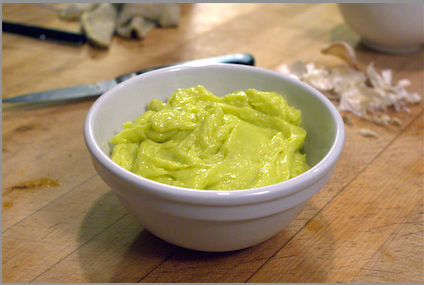
Photo courtesy of Tim Pierce via Flickr.com
A popular sauce in Provence, aioli is essentially mayonnaise including garlic. Nowadays, many types of flavored mayonnaise are commonly referred to as an aioli (which,let’s be honest, sounds tres cooler than your basic mayo), however culinary traditionalists will tell you that a pure aioli only contains egg yolks, olive oil, garlic, and lemon juice.
Charcuterie (shar-coo-three)
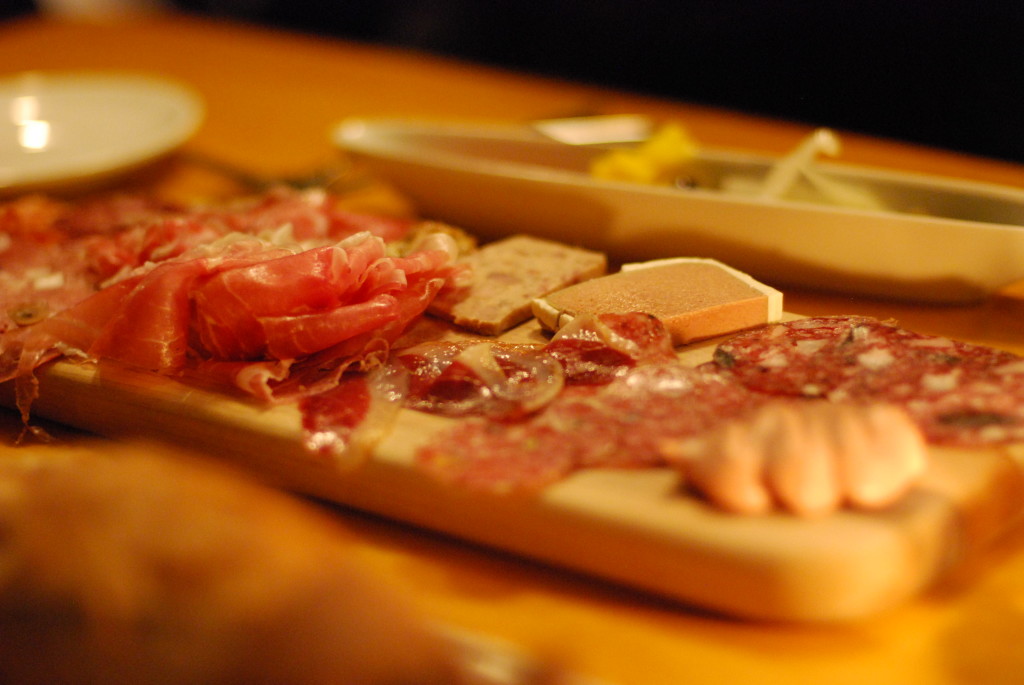
Photo courtesy of Lucas Richarz via Flickr.com
Quite the mouthful to say, a charcuterie board (aka a meat-and-cheese tray) typically consists of an array of cold cuts and slices of other cured meats. A combination of pre-sliced, hard, semi-soft, and soft cheeses made of various animal milks are also found on most charcuterie boards as well.
Chiffonade (shee-foh-naad)
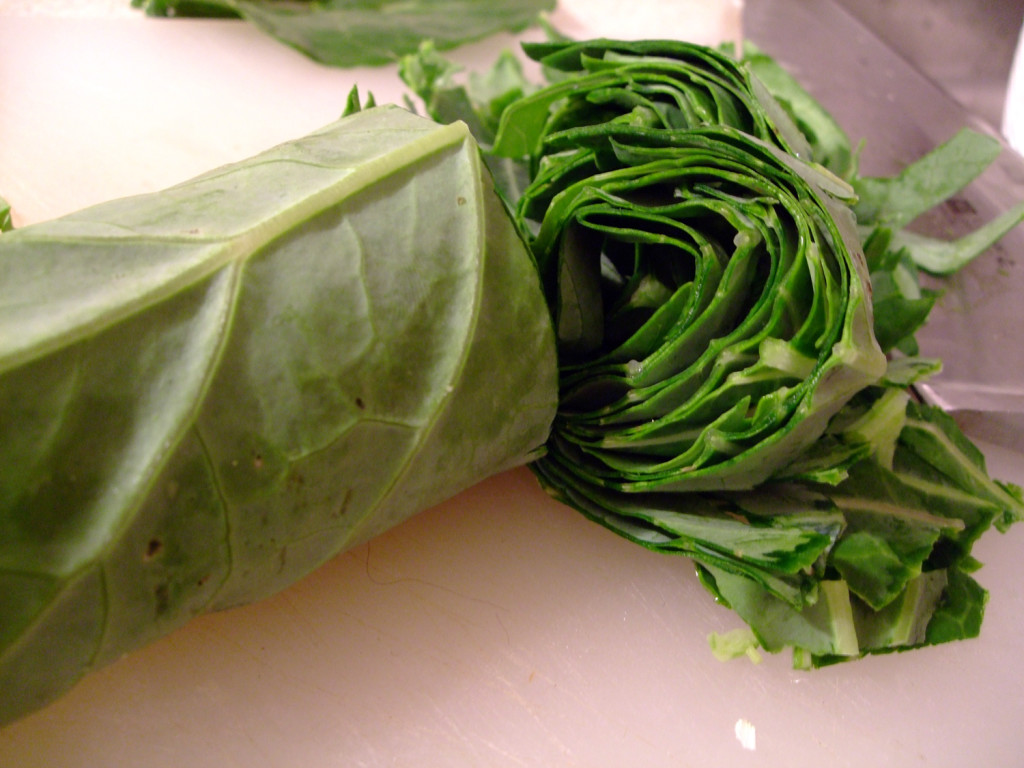
Photo courtesy of Amber Karnes via Flickr.com
Roughly translating to “little ribbon” in French, chiffonade refers to a specific knife technique. The leaves of an herb or vegetable are first rolled with one’s fingers and then thinly sliced to create a wavy, ribbon-like effect. It’s a super simple way to make plain herbs look as they became possessed by Clinton Kelly and Stacy London and turned into the most fashion-forward looking bits on your plate.
Deglaze or Déglacer (dee-glace)
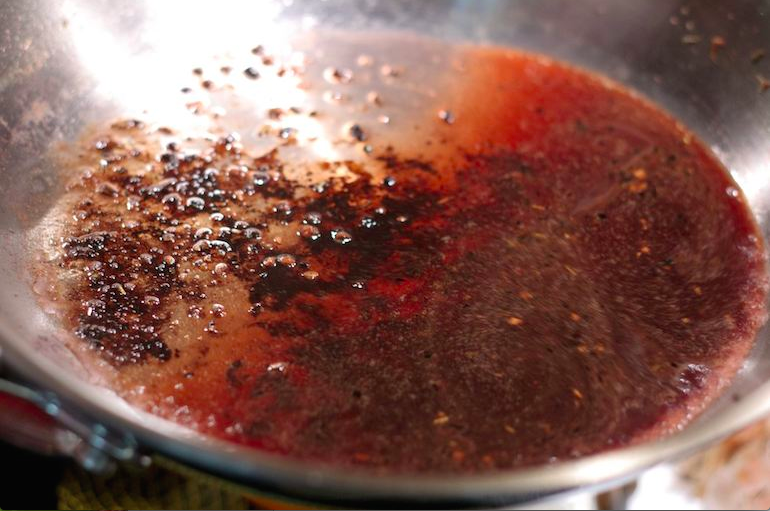
Photo courtesy of Flickr.com
It’s official: you are not a true Food Network junkie unless you know what this word means and have heard it used by at least 5 different Food Network personalities (cough-cough Anne, Bobby, Giada, Alton, and of course, Queen Rachael Ray). Deglaze-ing is the pouring of wine into the bottom of a pan that has bits stuck to the bottom due to previous roasting/sautéing to help create a more flavorful sauce.
En Papillote (en pap-ee-yoht)
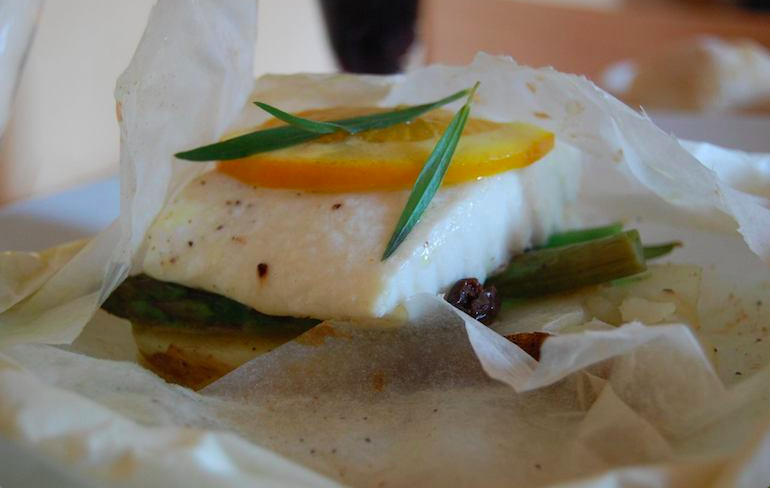
Photo courtesy of Flickr.com
This is my most favorite French phrase to enunciate because of how easily in rolls off the tongue. En papillote refers to food cooked in parchment paper, most commonly fish. Use this terminology when making your own restaurant-quality fish at home.
Flambé (flahm-bay)

Photo courtesy of Scott Gould via Flickr.com
Iron Chef should probs rename itself to Flambé Chef, because no episode of the hit cooking show is complete without whipping out this technique. Flambéing is a technique in which alcohol is used for presentation as well as to infuse aroma and flavor. It’s used in a variety of dishes from coq au vin to Baked Alaska.
Ganache (geh-nah-sh)
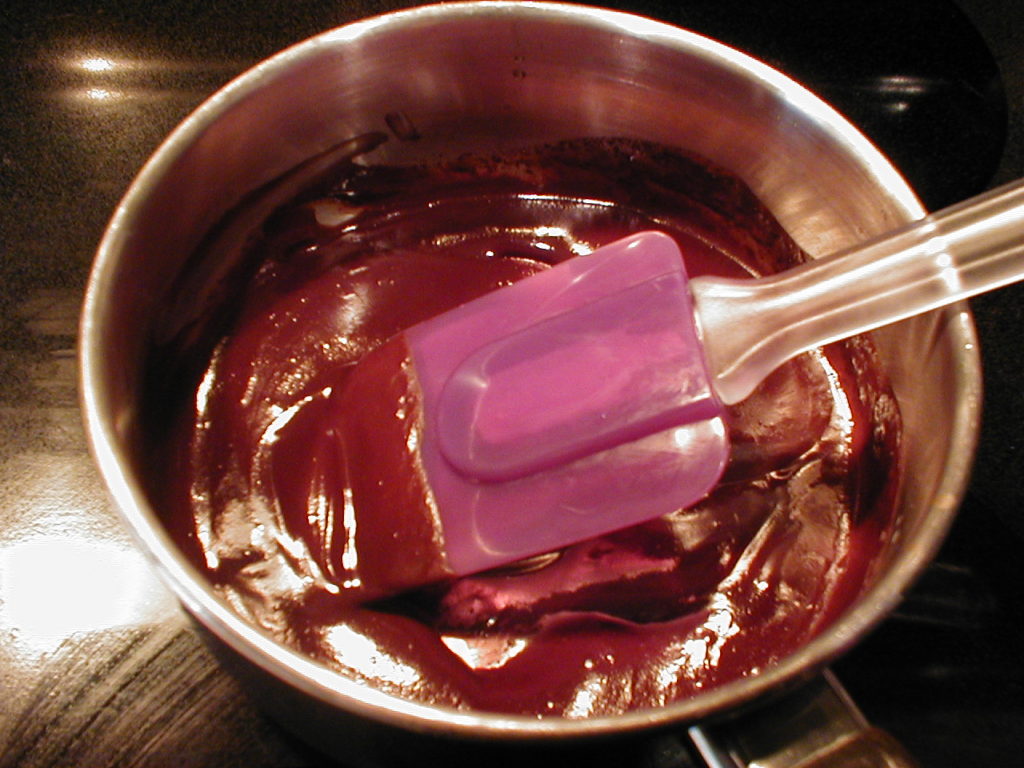
Photo courtesy of Heather Kennedy via Flickr.com
This is a fancy reference to a combination of chocolate and cream, which can be used for dipping strawberries, glazing, or filling an assortment of pastries. As sophisticated as it sounds, anyone can create a simple ganache with just 2-ingredients and a microwave.
Julienne (jool-ee-en) or Allumette
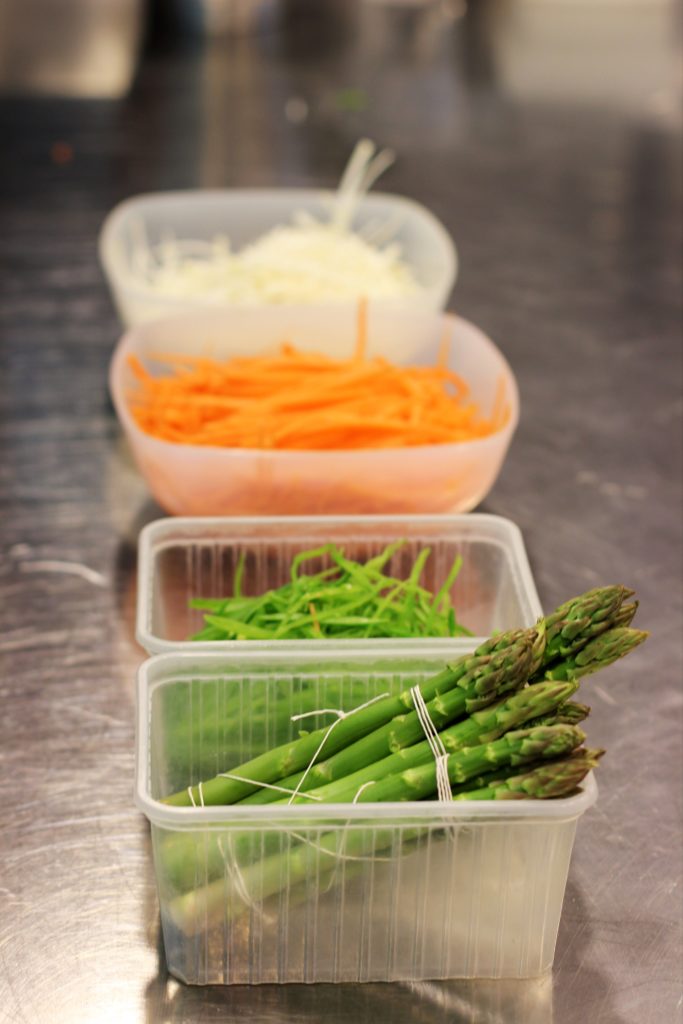
Photo courtesy of Jeremy Couture via Flickr.com
This French term is not only a knife technique for cutting food into matchstick pieces, but it can also double-up as an adorable name for a baby girl amiright Chris and Gwyneth?
Mirepoix (meer-pwah)
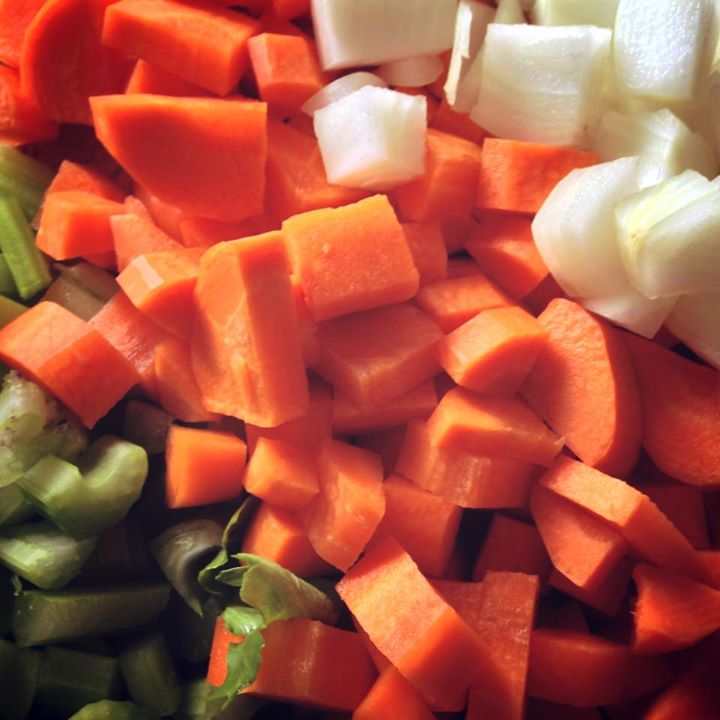
Photo courtesy of Kevin Lee via Flickr.com
Cajun cuisine may have their Holy trinity, but so does French cuisine, and it’s mirepoix. A mirepoix is comprised of mixed vegetables (usually onion, carrots, and celery), which are used in everything from soups and stews to roasts.
Mise En Place (mees ahn plaas)
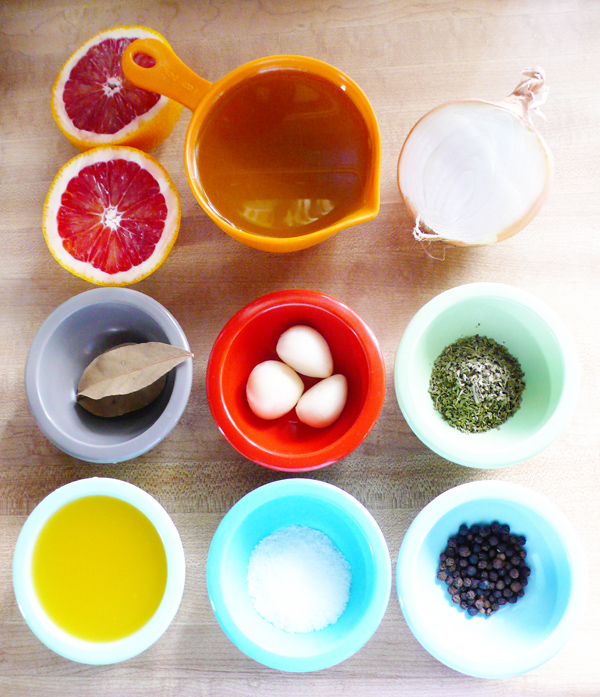
Photo courtesy of chotda via Flickr.com
I first heard of this term on an episode of Worst Cooks in America, and as intimidating and bougie as the word sounds, it means something rather simple. French for “putting in place, mise en place is the process of prepping ingredients prior to actually using them. It is a common practice in restaurant cooking but is easily applicable to a household kitchen for prepping meals with efficiency.
Roux (roo)
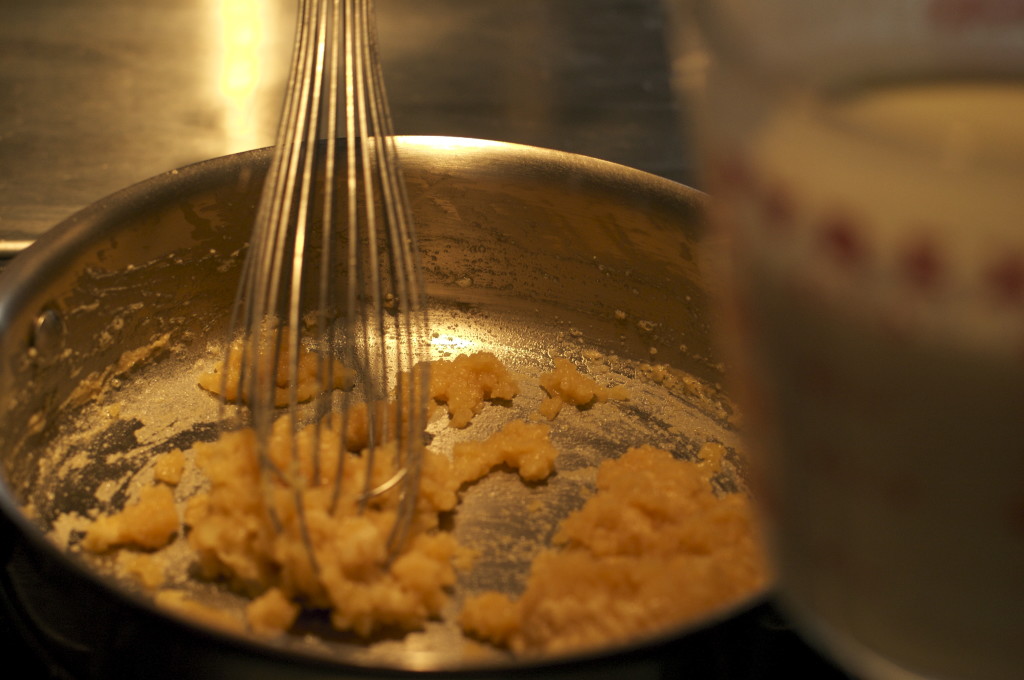
Photo courtesy of Daryn Nakhuda via Flickr.com
I am in my twenties and to this day I still associate this particular French word with that one iCarly episode where Carly rejects the ever-so-sassy Nevel Papperman, and he tells her she’ll rue the day, or as she perceives it: “roux” the day.
So to refresh you fellow millennials who are also getting Nickelodeon flashbacks, a roux (not to be confused with rue) is a combination of flour and fat used to create a sauce or thicken a dish, usually a stew. And it’s super impressive to name drop, so definitely use the word the next time you see your mother, aunt, grandma, bae, etc. mixing flour and butter for a dish.


